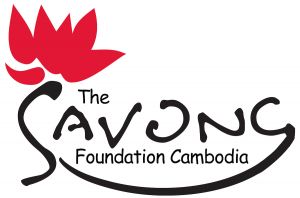Are you a manipulative nonprofit?
If you’re an animal lover, you’ve probably seen them in your Facebook and Twitter feeds; photos of tortured, abused and very sad looking animals that need our help. I have a lot of friends that do animal rescue and I keep an eye on animal nonprofits and so I see these photos constantly. I’m very disturbed by these images and I’ve asked myself why people publish them, especially when I’m usually flipping through Facebook at lunchtime.
The obvious answer to this is the shock value. In this day and age of extreme violence, both in real life and on television and movies, the photos have to be very graphic to get people to wake up out of their slumber and care –especially if the bad things are happening half way around the world. And if people care then awareness is raised and presumably donations for the nonprofits will follow. The same idea works on television too. I think everyone has seen the animal welfare commercials with the achingly sad voice of Sarah McLachlan floating through images of death row dogs and cats. You have to have a pretty cold heart to not feel even a little weepy eyed at such suffering.
So, is there anything wrong with using such imagery?
I think the biggest problem is desensitization. I remember watching the Sally Struthers’ Christian Children’s Fund commercials in the late 80s and even though these commercials seemed to be very effective in the earlier years, they became a punchline later on. The sight of a dying kid with flies biting their eyeballs (thank you Book of Mormon for that reference) just isn’t as effective as it once was. Still, I’m sure the campaign was very successful and it probably raised a lot of money in its time. I still occasionally see these commercials of sad looking kids but I think these child organizations have had to come up with different strategies to excite and energize their donors. I wonder if the animal rescue groups will need to take the same approach once the sight of an emaciated dog just doesn’t elicit the same amount of sympathy that it does now.
Perhaps more worrisome is that there are some nonprofits that use sensationalism to oversell their message. The best example of this was the infamous Kony 2012 video that was produced by the Invisible Children nonprofit. I saw the video and yes, it was definitely compelling but using the CEO’s cute Caucasian kid to convey the atrocities of the Kony regime in Africa was just ridiculously manipulative. And of course, once the video went viral, it was picked apart by the experts who said that it oversimplified a very complex problem and was full of factual flaws. Perhaps Invisible Children was doing good work before the infamous video hit YouTube but they should never have relied on such hyperbole to tell a story—even if they were successful in making Kony famous, which allegedly, was their plan all along.
To add to that point, I think the public needs to be very skeptical of any nonprofit when they are trying hard to sell their message with the help of shocking images, videos or storytelling. There is a charity that was practically in my backyard when I worked in Los Angeles and they have chosen recently to focus on rescuing dogs from Asian countries where dog meat is still a concern. The photos on Facebook are incredibly graphic—even for this veterinarian who has seen some terrible abuse cases first hand—and the accompanying stories are so overwrought with emotion that I think even Nicholas Sparks would be put to shame. It is an incredibly effective strategy if the CEO wants to raise awareness because there are hundreds of shares and comments with every post. But I do hope that if these people are donating money (which I assume a portion of them are), then they are asking themselves why there isn’t any financial information on the website or even who the board members are, if indeed there are board members. I really feel strongly that a nonprofit needs to respect their donors by being completely transparent and it seems very wrong to manipulate people’s emotions without even the courtesy of public financial records.
When I started the Savong Foundation many years ago, I decided that I didn’t want to be a manipulative nonprofit. I didn’t want our team to plaster images of sad looking kids everywhere on social media who were in desperate need of a western donor. I didn’t want to focus on the tragic stories. I wanted to be completely transparent about what we were trying to do and I wanted us to focus on the happy stories, our success stories, how we are able to transform lives with even the smallest donation. I wanted our students to be a proud group of people and not resort to shameless tactics to find their support. I think it’s a better approach but being completely honest, it’s not the easiest approach. I think I would get a lot more shares and likes and probably even more money if I tried to raise a few social media eyebrows.
I guess we’ll have to settle for less and I’m perfectly okay with that.




